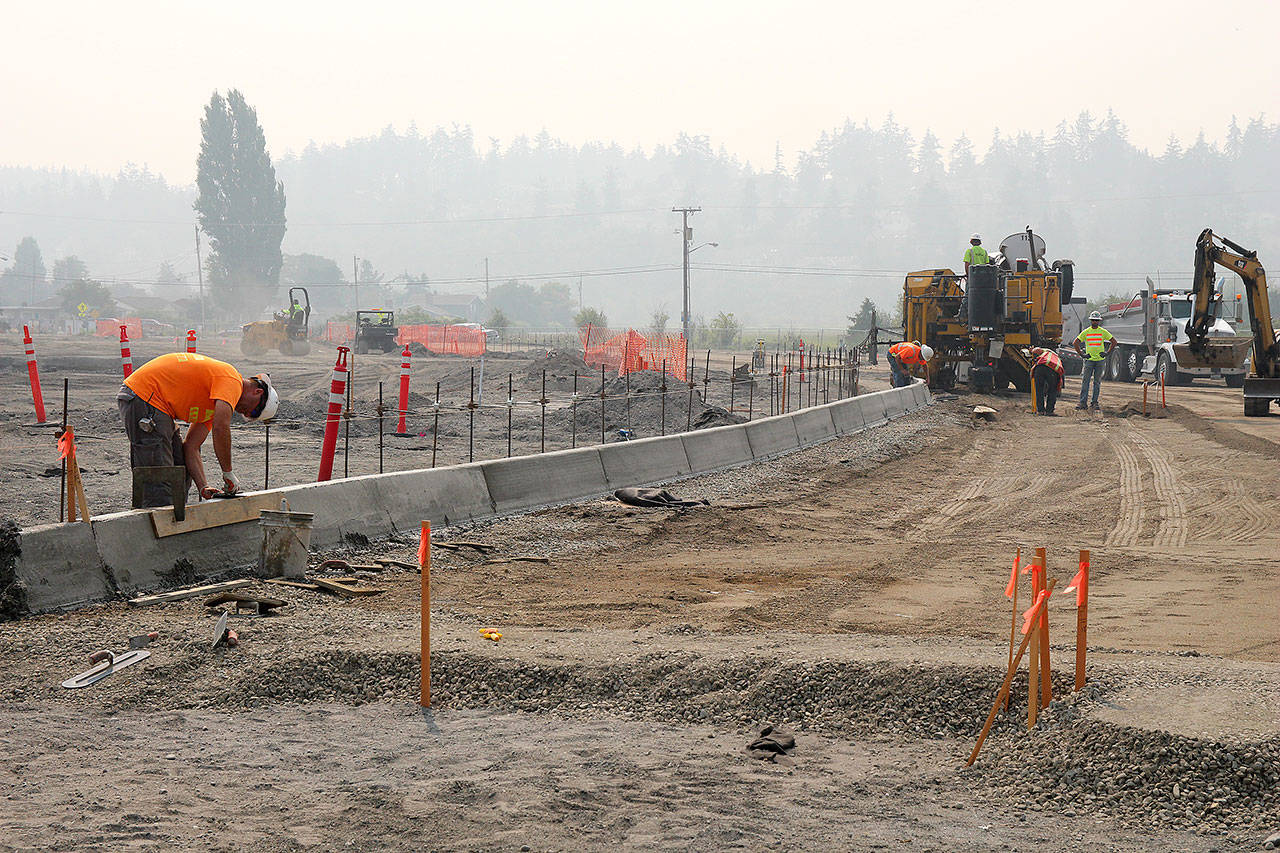Members of the Oak Harbor Parks Board and the Public Works Department toured the expanse of dirt and machinery that is Windjammer Park Monday.
By next June, it will be all grass, trees and shiny new buildings, Project Manager Brett Arvidson said.
The popular waterfront park was torn up and closed during the construction of the sewage treatment plant, which should be started up for testing by the end of September.
Final decisions about the shape of the park were made in recent months, clearing the way for crews to get to work.
Plans for the park are only the first phase of the Windjammer Integration Plan, but it will mean big changes.
“We took a big bite out of the apple,” Arvidson said in an interview. “I think it’s going to be beautiful when it’s done.”
Heavy machinery is busy spreading 50,000 yards of dirt from the excavation of the sewage treatment plant over the park, raising it by one to three feet in different areas, Arvidson said.
Oak Harbor council members recently decided to fund a double-kitchen building on the west side of the 25-acre park as well as a pavilion.
Another kitchen will be on the east side of the park.
Council members voiced concerns about the cost of the west-side kitchen and the pavilion, but decided to fund the buildings with real estate excise taxes. The kitchen will cost about $1 million and the pavilion will be about $700,000, according to city officials.
The former city engineer told the council that one of the reasons the kitchen is so expensive is that it has to be built to withstand the marine environment.
Arvidson said the pavilion will be the kind of structure that’s perfect for concerts, weddings or just getting out of the rain.
Council members also decided to remove the windmill in the park. The paddles were taken off because they were reportedly deteriorating.
Staff members estimated the cost of fixing the structure would run into six figures, more expensive than it would be to build a new one.
Council members said they want to see a new windmill built, but there are currently no plans for one.
Some people were upset when the city removed all the poplar trees from the park.
Arvidson said the decision was made because the fast-growing trees were coming to the end of their natural lives. They will be replaced with 140 trees of all sizes, including 27 of the city’s namesake Garry oaks.
A splash park with a pirate theme will be built near the water.
Public restrooms will return. The city is purchasing four Portland loos for the park.
The metal structures are built to be easily cleaned and also deter people from staying in them for long periods, or committing crimes inside. People can see into them through grates at the top and bottom.
Arvidson said a plaza will be big enough for 80 vendors if a farmers market is held there. An interpretive center will overlook the plaza and the water beyond.
“It will be the best view in the city,” he said, adding that he hopes the use of the building can be expanded beyond educational displays about sewage treatment, which is a government requirement.
Workers will spread three to six inches of topsoil and seed the park this fall so the grass will be ready for next summer.
The RV park is gone, to be replaced with a new parking lot on the west side of the park.
The former Whidbey Island Bank building on Pioneer Way, which served as offices for contractors, will probably come down the week after Labor Day, Arvidson said. It will provide more parking for the treatment plant.
In addition, there will be plenty of open green space in the park for people to enjoy. It’s more than enough space for carnivals and other events, he said.
Arvidson said the park will “absolutely” be open for Fourth of July celebrations.



